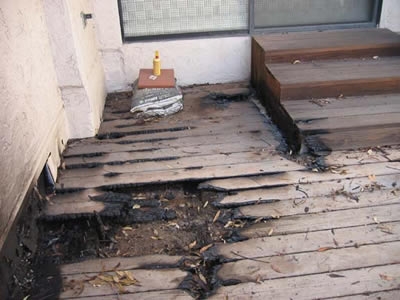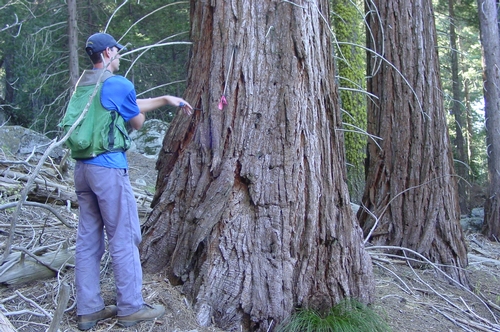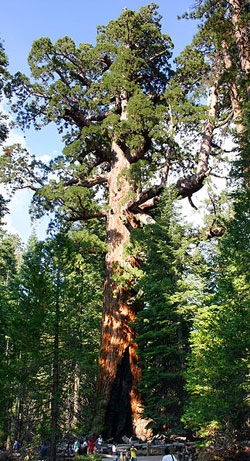Posts Tagged: wildfire
Protecting a home from wildfire for $20 or less
There are many things homeowners can do to protect their homes from wildfire that cost $20 or less, said the Insurance Institute for Business and Home Safety in a news release distributed yesterday.
The article suggests undertaking low-cost, simple but important safety steps like clearing gutters, sealing around doors and covering vents.
Last month, the organization conducted the first-ever full-scale wildfire demonstration at its South Carolina research center. The demonstration was part of a building science initiative designed to illustrate how easily some commonly used materials and items near or on houses can ignite from embers, and what homeowners can do to better protect their homes.
“Most people believe that it is the advancing line of flames during a wildfire that destroys homes,” IBHS president was quoted in the story. “Rather, it is embers or firebrands that create spot fires by igniting vegetation, debris and flammable materials that lead to ignition of the exterior of a house, as well as embers blown or drawn into buildings through gable vents, soffit vents and other openings that can ignite a house from the inside. And our laboratory test vividly demonstrated just that.”
The article credited UC Cooperative Extension for contributing to its list of suggestions for improving a home's chances of survival when a wildfire threatens. The suggestions include:
- Ensure the home has a Class A rated roof.
- Maintain a carefully managed and maintained vegetation zone within a five-foot zone adjacent to the home.
- When a wildfire is threatening, close the windows.
- Clean debris out of rain gutters.
- Install end-stops (bird-stops) at the edge of the roof if there are gaps.
- Do not store combustible items, such as firewood and lumber, under the deck.
- Keep all gaps clear of vegetative debris or cover gaps with metal siding.
- Make sure the garage door is well sealed at the edges.
UC Cooperative Extension wood durability advisor Stephen Quarles has developed an online Homeowner's Wildfire Mitigation Guide with detailed instructions for making changes to a home and its surroundings to reduce the possibility of damage from wildfires.

This deck had debris in the board gaps that caught fire.
Study to examine giant sequoia groves
The giant sequoias of the Sierra Nevada are the biggest and among the oldest trees on the planet. Some are 2,000 to 3,000 years old. Forestry scientists from the University of California and Cal Poly, San Luis Obispo, want to learn more about how disturbance factors affect the health of these aging behemoths.
Growth-response studies to date show that tree vigor can increase following moderate intensity disturbances such as prescribed fire or mechanical fire-hazard reduction treatments. Less certain, however, is how giant sequoias respond to lower and higher intensity disturbances. This information is of critical importance to identify the tradeoffs involved in fire prevention treatments or evaluating management options.
This summer scientists will visit native groves within Giant Sequoia National Monument, where high-intensity disturbances occurred 20 years ago. Harvests conducted at that time removed all trees except for large giant sequoia, creating a forest structure similar to what you’d expect after a high-intensity wildfire. Following the harvests, there was considerable public concern over the fate of the giant sequoias remaining. Mortality and growth in these areas has not been assessed until now.
The primary investigator on the project is Robert York, station manager of the UC Center for Forestry and an adjunct professor in the UC Berkeley Department of Environmental Science, Policy and Management. York is an expert in giant sequoia ecology. His co-investigator on the project is Scott Sink, a professor in the Department of Natural Resources at Cal Poly, San Luis Obispo. He has investigated differences between old growth and secondary forests and developed expertise in measurements of tree ring growth. The researchers will partner with forest ecologist Steve Hanna of Giant Sequoia National Monument in Porterville.
The scientists will also study tree ring widths taken from 33 giant sequoias at the UC-Whitaker Forest, where light burns and small tree removal occurred in 1967. York previously conducted field work on growth response in a giant sequoia forest subjected to a moderate-intensity disturbance. In addition to publishing a journal article on this work, researchers will hold a field trip for managers of giant sequoia groves, involve UC and CSU students in field and laboratory work, and develop a lab module for coursework at UC Berkeley.
The project is funded by a $10,000 grant intended to foster collaboration in higher education in California on issues affecting agriculture, natural resources or human sciences. In their grant proposal, the researchers said: “We have a unique opportunity to measure growth response in giant sequoia to these different levels of disturbance intensity, and therefore improve our understanding of this species’ complex life-history strategy, while informing management within giant sequoia groves.”
Lake Tahoe declares its own wildfire awareness week
The "official" Wildfire Awareness Week falls in May, but this year the Lake Tahoe community marks the event in July, according to a story in the Tahoe Daily Tribune.
UC Cooperative Extension natural resources advisor Susie Kocher told the newspaper that participation in the statewide springtime event has been low in the Tahoe Basin because many second-home owners are only there in the summer.
Because of the low participation rates, fire professionals, the Nevada Fire Safe Council, University of Nevada and University of California Cooperative Extension programs and other organizations created their own week-long event to promote wildfire and ember awareness.
“The event is being held to encourage all Lake Tahoe Basin residents to ‘Be Ember Prepared' and help protect their homes and communities from the embers that cause destruction of many homes during wildfires,” Kocher was quoted.
The article says a capstone event will be a wildfire summit on July 9 from 9 a.m. to 5 p.m. at Harvey's Casino. More information and the complete schedule of events are available on the Living with Fire website.

Lake Tahoe Basin Wildfire Awareness Week.
Chronicle op-ed questions fire prevention tactics
Stripping plants from swaths of land to create fire breaks may not be the best way to prevent wildfire damage, according to an op-ed article published in the San Francisco Chronicle yesterday. Writer Ben Preston said the long-practiced fire management strategy opens space for invasive weed invasion, which could burn even hotter.
Research by fire scientists at universities all over the Western United States has found that, despite extensive efforts to prevent large fires with prescribed burns and brush removal, fires continue to be a regular occurrence. And modifying the landscape, research indicates, has unintended impacts.
UC Berkeley wildfire researcher Max Moritz told the writer that in Nothern California, scotch broom, pampas grass and other more flammable nonnatives tend to move into cleared areas where some variety of chaparral once stood.
Preston suggests the best fire management alternatives are:
- Creating defensible space around homes and other buildings. UC Cooperative Extension has a publication, Home Landscaping for Fire, with guidelines for creating defensible space that doesn't suggest eliminating all plants on the land.
- Investing in roof sprinklers and fire-retardant gels.
- Organizing citizen emergency response teams to deal with spot fires.
For more information, see UC's two-page publication Invasive Plants and Wildfires in Southern California.

Wildfire threatening a California subdivision.
Modifying the lay of the land for fire resistence
Creating defensible space around woodland homes is a legal requirement and common-sense habit. UC Cooperative Extension has developed extensive information that will help homeowners maximize safety while maintaining the greenery that makes rural living desirable, according to an article in the Redding Record Searchlight.
Defensible space, yes, but UC Cooperative Extension forestry advisor Gary Nakamura told reporter Laura Christman, "It doesn't mean you need to nuke the site and clear it."
Bare dirt would be the ultimate in fire defense, but such a landscape comes up short in appearance, erosion control and wildlife habitat. Besides, Nakamura said, many homes that succumb to wildland fire are ignited by embers that drifted a long way from the fire line.
"It's usually not this wall of wildfire coming to the house. That's people's cartoon vision of what happens," Nakamura was quoted.
The strategy of defensible space is to have an area around the house where embers are less likely to ignite plants or structures. Or, if an ember does start a fire, the fire will smolder or burn slowly so it can be extinguished. Homeowners need to create conditions so that firefighters can "safely get in there and fight the fire," Nakamura advised.
The story noted that UC's Home Landscaping for Fire publication recommends thinning brush and trees 70 feet beyond the "lean and green zone," a 30-foot band around the home. Trees shouldn't have limbs any closer than 10 feet from each other and spacing should be farther on hillsides, where fire picks up speed and intensity.
UC has collected research-based information about protecting homes from fire in a wildfire online media kit. The resource contains links to stories, video and UC Web sites dedicated to helping Californians minimize fire damage and stay safe.

One of many UC publications on wildfire resistence.



